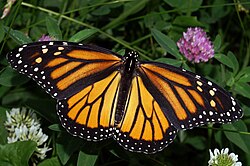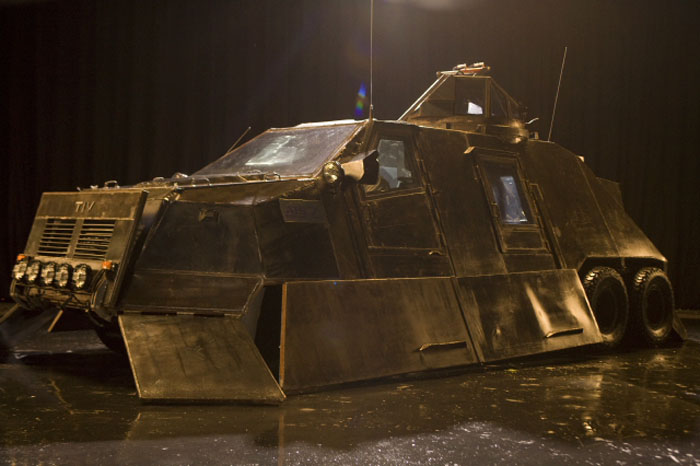Now they start out forming their chrysalis as a small caterpillar. They will stay in their chrysalis for about 10 days. When they come out, their wings look a little shriveled up. But give them another chance. They've got to hang upside down and let the blood flow to the wings. And then they start their journey.
The journey starts out easy. They start flying away. Especially a thousand-mile journey needs to have a rest stop, of course. Monarch butterflies usually eat milkweed. And they have a built-in straw: their proboscis.
Now they take off again. But wait, one of them has found himself trapped in a spider web. For some reason, the spider cut his web and let the Monarch go. Well Monarchs are poisonous. Once a predator takes a bite of it, it won't eat another Monarch as long as it lives.
But what's this? It's another Monarch predator: the blue-tailed tree swallow. But the Monarch has a defense against predators like the blue-tailed tree swallow; they have the defense of flight-movements!
But now they have to cross a lot of water. But luckily the Monarch butterfly has a special feature. They can store fat in their abdomen. But unfortunately, butterflies are very light. But if a Monarch butterfly finds a boat they might be able to ride out the wind. Once the weather stops being windy, they can take off.
Finally, they've made it to their secret hideout in Mexico. But wait, what's going on? Aren't these Monarchs migrators? But for some reason, they're actually hibernating - to wait out the winter. After winter, they start laying some eggs. But unfortunately they are dying, but that's how nature goes.
Here's the whole thing in fast phase. First they come out of the egg and they start to eat the egg. And then they eat a lot. Then they go into chrysalis mode. And then they come out and let their wings get some blood, start the flight, go across a huge lake, hibernate at Mexico, wake up, lay eggs, and then die. And the babies are the ones who continue the journey.
(photo from learner.org)
(photo from wikipedia.com)




